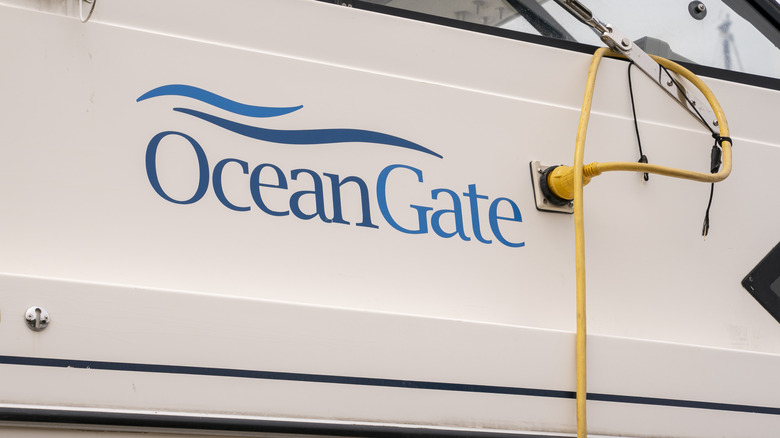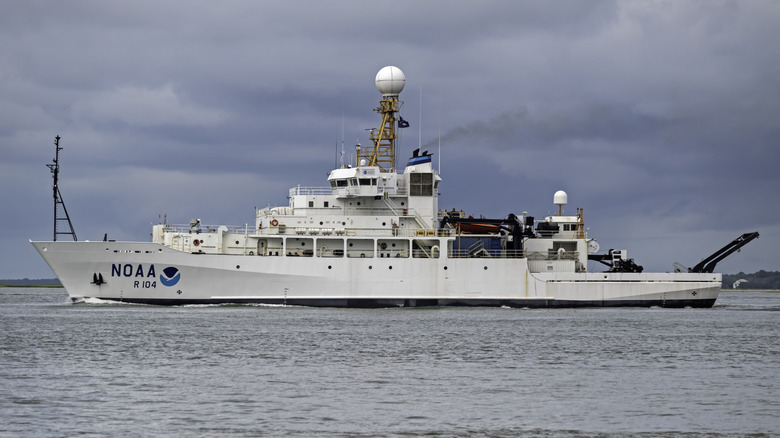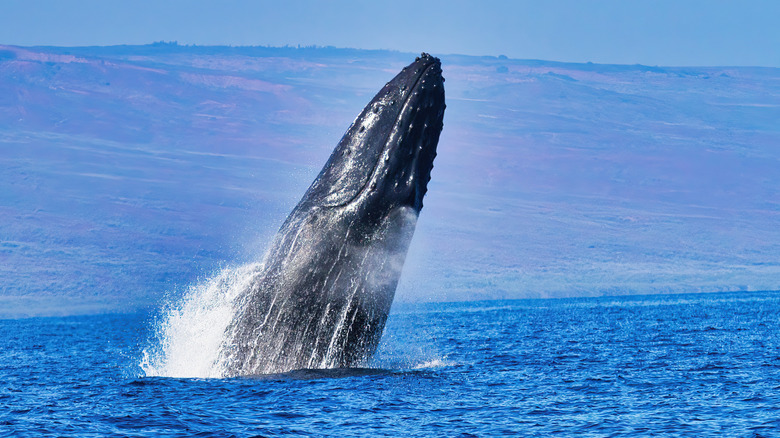How Titan Sub's Terrifying Last Sounds Were Recorded (And What The Tech's Really For)
The tragic implosion of OceanGate's Titan submersible in June 2023 was one of the most widely discussed events of that year. What was intended to be an ambitious deep-sea expedition to explore the wreckage of the Titanic instead ended in tragedy when the submersible suffered a catastrophic structural failure, resulting in the instantaneous loss of all five people on board. The incident not only sparked widespread conversations about the risks of extreme deep-sea exploration but also served as a sobering reminder of the unforgiving nature of the deep ocean.
While we already have a fair idea of what went wrong with OceanGate's sub nearly 3 miles beneath the ocean, the consensus among several experts — even before the tragedy — was that the Titan was doomed to fail. Almost two years since the incident, the United States Coast Guard has released several pieces of crucial evidence surrounding the tragedy into the public domain, including video footage of the remnants of the sub clearly visible on the ocean floor. The sub was eventually raised to the surface for further investigation.
This 23-second audio clip is the latest piece of evidence to be released by the agency. In it, the sound of the Titan sub's catastrophic implosion could be distinctly heard. Recorded by the National Oceanic and Atmospheric Administration (NOAA) on the day of the tragedy, the first 9 seconds of the eerie recording sound like static noise. Post the 9-second mark, there is a distinctive roar resembling thunder, which continues for the next seven seconds. It is then followed by 7 seconds of static.
This haunting recording is the only known real-time audio evidence of the event, offering a rare glimpse into the final moments of the tragedy.
How NOAA recorded the Titan's last sounds
As the federal agency entrusted with the responsibility of studying the environment and providing various services ranging from weather forecasting and oceanic research to marine and coastal resource protection, the NOAA deploys various scientific equipment in areas under its jurisdiction.
Since 2014, the NOAA and several of its sister agencies started the Ocean Noise Reference Station Network. The project envisioned setting up a network of ocean noise reference stations — essentially sound recorders called hydrophones — that continuously record sounds of the ocean to monitor long-term changes and trends underwater.
These hydrophones continuously capture underwater sounds to track long-term changes and trends in the ocean. This equipment is designed to record underwater sounds that range between the frequency range of 10 and 2,000 Hz, which covers a wide variety of common oceanic chatter, ranging from calls of whales and fish to sounds emitted by ships and even rain.
Twelve of these hydrophones — labeled NRS 01 to NRS 12 — were active across various areas of the U.S. coast, including areas near Alaska, Hawaii, American Samoa, and the U.S. Virgin Islands on the day of the tragedy. One of these hydrophones, located nearly 900 miles from the Titanic's final resting place, recorded the moment the Titan sub imploded on June 18, 2023.
What are NOAA's oceanic sound recorders used for?
To understand the reason NOAA set up a network of underwater recording equipment across the coast of the United States, we need first to understand the fact that sound travels far more efficiently in water compared to air. This also means sound can travel much longer distances underwater. Scientists have long established that several marine animals; including whales, dolphins, and several fish species use sound to communicate with each other. Needless to say, sounds emitted underwater form a very important part of the ocean ecology. A lot of information regarding the state of the ocean can be gathered by observing the changes in the sound of the ocean over long periods.
NOAA's network of Ocean Noise Reference Stations has, for the past decade, provided copious amounts of data for scientists to study the various kinds of oceanic noises. Besides giving us a better understanding of how oceanic life use sound to communicate with each other, these Noise Reference Stations have also helped scientists study the impact of human-induced oceanic noises on marine life.
The deployment of these hydrophones has helped scientists to several previously unknown facts about the ocean. For example, we now know the difference between the sound intensity of the Alaskan Arctic Ocean compared to the warmer Gulf of Mexico. These hydrophones have recorded whale calls and understand their migration patterns and routes. Data from the equipment have also been used to study the impact of the noise caused by ships traversing through major shipping routes across the ocean on marine life.
In the case of OceanGate's doomed Titan sub, NOAA's hydrophones ended up capturing the sound caused by its catastrophic implosion.


